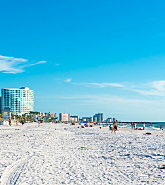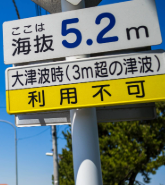The production of slab has accelerated over the last decade. I visited coastal slab in Grand Cayman after Ivan, wandered through whole neighborhoods of prime Mississippi slab after Katrina, extending six blocks in from the coast, and kicked some fine beachfront slab along the Bolivar peninsular in Texas after Ike.
However less of this slab has passed into forced real estate sales. Unlike 1989 Hugo on far away St. Croix, homeowners have gotten much better at arguing how someone should pay for their reconstruction.
It started in Florida where lawyers employed a century old Florida law, the Value Policy Law, passed in 1899. The law was intended to remove any ambiguity about what insurers would pay after a total fire loss: the “full value of the policy limit” under the terms of the contract. In 1969 Florida, unique among States, the provision was extended to cover hurricane losses. Following the flooding from Hurricane Irene in 1999, a home owner called Mierzwa challenged the Florida Windstorm Underwriting Association, and the judge determined that a wind insurer would be obligated to pay out the full insured value on the property when the property was a total loss, even when the majority of the damage had been caused by a non-covered peril, such as flood.
While Irene had been an incidental source of slab, the ruling arrived just in time for the 2004 hurricane season with its four hurricane strikes on Florida. Of all the storms it was Hurricane Ivan with its 18 foot storm surge that proved the biggest slab maker. The Mierzwa ruling meant that the insured could expect the wind insurer to pay full value for slabs. Lawyers began assembling class action lawsuits such as the “Scylla Properties” action won against Citizens Insurance Company, demanding full value repayment even when the wind damage was clearly a minority of the total. Threatened by a revolt among insurers, on June 1, 2005 the Florida Legislature amended the Value Policy Law so that the property insurer was only responsible for the proportion of the loss arising from the covered peril. However they did not make the change retrospective to stop the ongoing lawsuits from the 2004 hurricanes.
The 2005 crop of slab claims were principally in Louisiana and Mississippi, where only 30% of homeowners in the 100-year flood zone had any flood coverage. Even while insurers were considering how to manage the claims, federal money began to pour in. First in line were those slab owners of Mississippi, located inland of FEMA’s 100-year flood zone, none of whom had any NFIP flood coverage. To all this, ex gratia compensation was quickly agreed upon for up to $150,000 per property. Seeing the favors being offered to their Mississippi cousins, by February 2006, politicians in Louisiana had successfully argued that the Federal government should pay up to the same $150,000 threshold to more than 100,000 claimants with uninsured flood (and wind) damage in Louisiana, irrespective of whether they were in the predefined 100-year flood zone. For good measure, they lumped in compensation for Hurricane Rita in western Louisiana arguing that some of the damages may have overlapped.
This left one group of Katrina slab claimants without any government handouts, the coastal residents of Mississippi who lived within the 100-year flood zone, but had chosen not to purchase NFIP flood insurance. Unfortunately for the insurers, two of the largest slab owners of former waterfront homes in Pascagoula belonged to the trial lawyer Richard F. Scruggs and his brother in law, Senator Trent Lott. In the 1990’s Scruggs had won $248 Bn in settlements from tobacco and asbestos lawsuits. He now proceeded to take on the insurance companies on behalf of Mississippi slab claimants, winning more than $100 M from State Farm and other insurers.
The next slab maker was 2008 Hurricane Ike. This time it took a class action lawsuit against the Texas Wind Insurance Association on behalf of 2400 slab owners of the Bolivar Peninsular, which was finally settled with TWIA being told to pay 28% of the claims (a total of $189 M). The true wind damage on these properties was lower than this proportion, so the difference between the modeled wind damage and the 28% provided a new benchmark for slab “coverage leakage”.
In July 2012 President Obama signed into law a reauthorization for the National Flood Insurance Program to include “COASTAL”, the “Consumer Option for an Alternative System to Allocate Losses”, Act of 2012 that authorizes FEMA to arrive at a formula for settling slab claims (now known as “indeterminate losses”). The formula will be based on “very sophisticated models,” for which FEMA has to submit a plan to Congress in April 2013. By late 2014, FEMA’s storm, location, and property specific “indeterminate claims formula” should be in place for pure slab claims, defined as where there is “no material remnant of physical buildings” remaining and “insufficient or no tangible evidence.”
Never in the course of human history will so much intellectual and scientific attention be concentrated on the subject of 600 square feet of concrete and the ontological questions of exactly how wind and storm surge combined to remove the property to which it formerly provided a foundation. Insurers can only hope this will finally allow them to lay to rest “the slab question,” and not open up new rounds of litigation as to whether a few bolts or beams protruding from the concrete disqualify a settlement. With rising sea levels and stronger storms, there will be no shortage of future slabs to which the “formula” will have to be applied.






